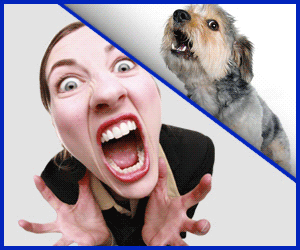Dog Body Language: Window to Your Dog’s Mind
One part of being a dog owner is that you should have the ability to read or analyze your dog body language. There will be times that our dogs act in certain ways depending on the situation it currently encounters. If anything, dogs are not so subtle when it comes to expressing, say, fear or disgust or curiosity.
We can see this in the way that a dog approaches an unfamiliar person and decides to (literally) stick his nose unto that person as if unmasking something sinister.
Still, we can’t all be too sure when we see our dogs act in such a way. One thing is for sure, dogs only act according to what their instincts tell them to. And apparently, it can bother us that there can be no set formula for decoding your dog body language.
It comes with the idea that dogs are complex animals, and as dog owners, part of your responsibility involves taking the time to address the subtle hints that your dog is giving off.
“Feeling the vibes” shouldn’t take a lot of your time and energy. What matters the most is that you apply as much as you can learn in terms of reading your dog body language.
But how can you start yourself off?
Well for one, you can start by taking note of how your dog interacts with other dogs, at the park or elsewhere. Observing your dog’s behavior this way enables you to map out the vast vocabulary of gestures that you dog currently possess.
One thing’s for sure, you might encounter some of the below simple gestures yourself.
Head over neck
When you see your dog placing his head on another’s neck, it is not an image to swoon over for its overwhelming cuteness. For the uninitiated, it is rather a gesture of putting another dog in his place.
In the canine world, it translates to the simple act of shutting someone up and asserting one’s dominance over a weaker force. Though there is not much of an issue here, there are of course dogs that refuse to be dominated. In such cases, a good growl or a tough bark will send a clear enough signal.
Playing with another dog
When you see your dog returning to another dog, it means that he enjoys the other’s company. As sociable as they can be, dogs possess a light-hearted approach towards making friends.
Although they can be very hostile to anyone (or anything) they deem to be a threat to their owners, dogs can also show a lighter side by engaging in wholesome play with other dogs.
In such a case, it is best to let your dog be and allow him enough space to expand his social circle.
Paw in the air
No, your dog is not trying to wave it like it just doesn’t care. It only means it wants to let you know that he is not hostile and that he is trying to be friendly with you or to someone else.
Hairs standing
When you see a dog being stiff and raising its fur, it only means it senses danger from someone he is not familiar with.
This is a sure sign that your dog will not hesitate to lunge forward and attack unless the other person decides to become more friendly.
But in certain cases, a hackling dog can only mean that it is being playful with another dog. So, depending on the situation, you need to keep an eye out on how your dog interacts with others.
Spinning
If your dog spins, it obviously means that it is happy and excited. Ever notice how your dog makes circles in front of you as you approach him with a bowl chock full of tasty food?
Well, you are not wrong to assume that your dog is enthusiastic and he just can’t control it. When interacting with other dogs, it only means that your dog is also ready for a fun time as well.
In Summary
There is still a lot more for you to understand when it comes to reading your dog body language. It shouldn’t take a lot of your time, although you need to familiarize with these gestures in order to truly understand and analyze your dog’s every move.


